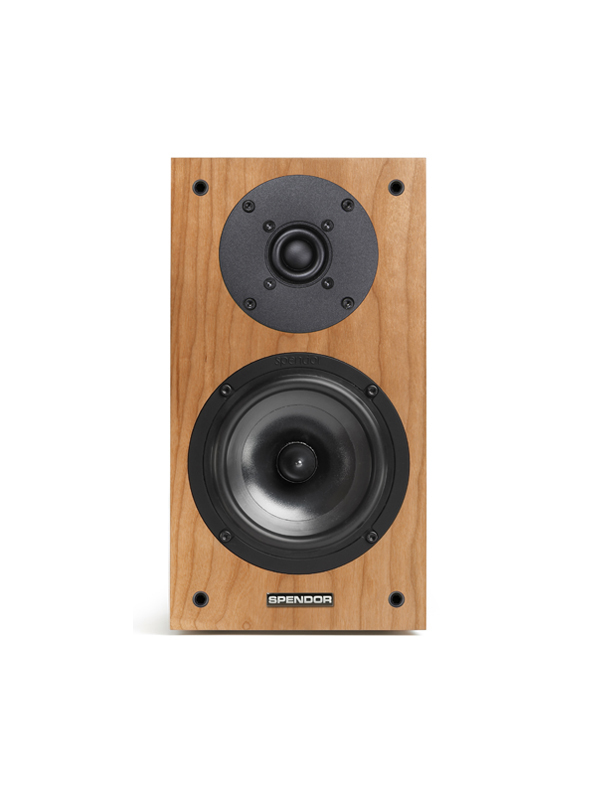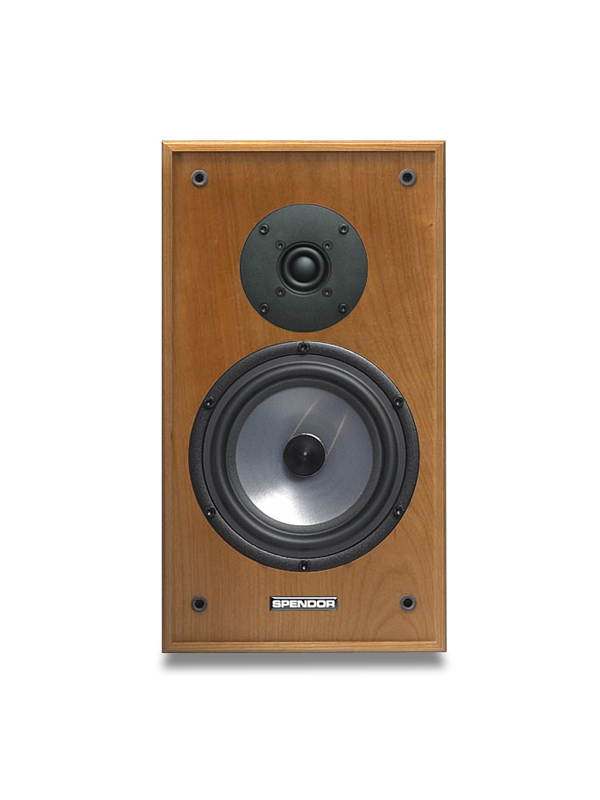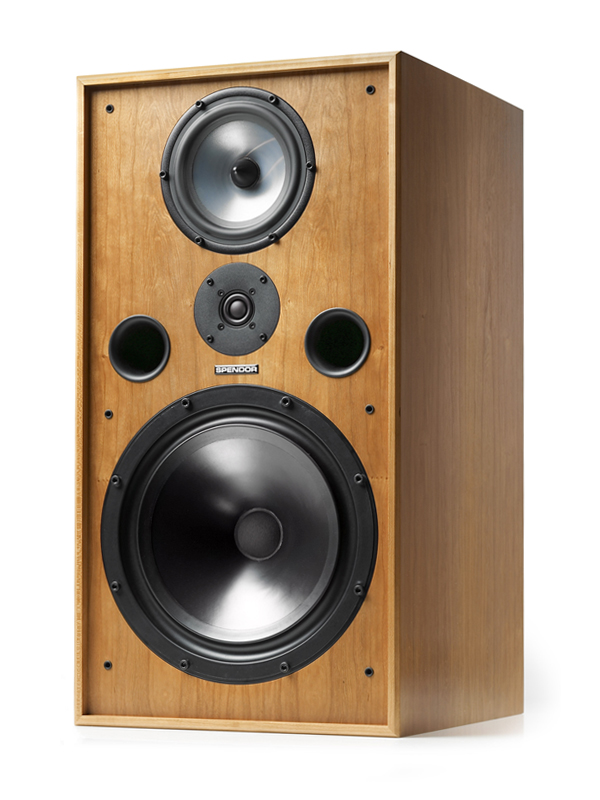
آقای فاطمی نمایندگی این برند بلندگوساز انگلیسی رو گرفتند و بزودی امکان خرید این برند در کنار آمپلی فایرهای EAR در ایران وجود خواهد داشت.
تیم تحقیقاتی بی بی سی انگلیس طرح بلندگویی رو برای استفاده در پروژه های خودش میریزه که بعدها کمپانی هایی مثل Harbeth و Chartwell و Spendor و Rogers با استفاده از لایسنس بی بی سی همون بلندگو رو خودشون میسازند با نام LS3/5a .
این انگلیسی ها سابقه زیادی تو ساخت بلندگو دارند و کمپانی های بلندگوسازی تو این کشور پیدا میشن که اولین سرمایه گذاریها رو روی گسترش تکنولوژی ساخت بلندگوها کردند مثل Kef که درایورهای مدل 3/5 هم همون موقع از این برند بود.

مقاله جالبی رو استریوفایل اینجا در مورد هر کدوم از ساخته های این شرکت ها گذاشته که جالبه :
http://www.stereophile.com/standloudspeakers/361/index.html
پیشنهاد میکنم لینک بالا رو تمام صفحاتش رو دنبال کنید.
Sidebar 3: BBC LS3/5a Specifications
Description: Two-way, sealed-box, stand-mounted loudspeaker. Drive-units: 0.75″ (25mm) Mylar-dome tweeter, 4.5″ (110mm) Bextrene-cone woofer. Crossover frequency: 3kHz. Crossover slopes: not specified. Frequency response: 80Hz-20kHz ±3dB at 1m with grilles on. Sensitivity: 82dB/W/m. Nominal impedance: 16 ohms (1977-1984); 10 ohms (1989 onward). Amplifier requirements: 50W maximum.
Dimensions: 12″ H by 7.5″ W by 6.25″ D. Enclosure volume: 5 liters. Weight: 11.7 lbs each.
Price: $430/pair (1977), $450/pair (1984), $650/pair (1989), $999/pair (1993), $1295/pair (1996), $1695/pair (2007). Approximate number of dealers: 60 (1993).
Manufacturers: Rogers Loudspeakers Ltd., Mitcham, Surrey, England (1977, 1989); Spendor loudspeakers, Redhill, Surry, England (1984); Harbeth Acoustics, Haywards Heath, West Sussex, England (1993). KEF, Maidstone, Kent, England (1996). Stirling Broadcast, Somerset, England. Web: www.stirlingbroadcast.net (2007).
آقای فاطمی دوست داشتند همون صدایی رو تداعی کنند که های فای انگلیس در دوران کلاسیک گذشته اونرو برای شنونده پخش میکرد و برای همین برند اسپندور رو آوردند.
چه خوبه ما صدای Spendor رو با EAR بشنویم و ببینیم تا چه حد صدا موزیکال و دوست داشتنی هست. من که قبلا مدل 3/5 هاربت رو پیش آقای آلن شنیدم خیلی خوشم اومد و برام خیلی بلندگوی جذابی بود.
http://www.kef.com/ca/about/ls35a
Raymond Cooke, the founder of KEF in 1961, had close links to the BBC dating back to his time in the BBC Engineering Designs Department in the early 1950s, where he worked with influential sound engineers such as Dudley Harwood and D.E.L.Shorter. This connection was re-established in the early 1960s when KEF signed an agreement to manufacture the BBC designed LS5/1A monitor under licence to the corporation – production continued into the mid 1970s. Also manufactured during this period were the LS5/2, LS3/4 and the 3-way LS5/5 – for which KEF also manufactured the 12” bass and 8” midrange drivers. KEF’s meticulous approach to production engineering was well suited to the manufacture of these tight tolerance monitors.
Much of the early communication between KEF and the BBC Research department at Kingwood Warren centred on new materials for loudspeaker diaphragms and surrounds. KEF had utilised a laminate of polystyrene and aluminium foil for the B1814 and B139 bass drivers, and chose Melinex for the diaphragm of the T15 tweeter. In the mid 1960s the BBC started experimenting with the use of plastics, and the result was the three-way, Bextrene coned LS5/5.
In 1966 KEF introduced the first commercially available Bextrene coned drive unit, the B110 (A6362), a 110mm bass/midrange unit. Along with the new T27 (A6340), a 19mm dome tweeter with a Melinex diaphragm, these two units found application in the new bookshelf Cresta system, and in the three-way Concerto in 1969. As was the custom in those days, these units were shown to the BBC and a small batch was subsequently sent in for evaluation.
In 1968 the BBC made a decision to study acoustical scale modelling to assist in the design of new music studios [1]. For this work, they required a small sound source that would produce controlled acoustic radiation up to 100kHz. The first system produced was a 2-way.
The bass section, required to operate up to 15kHz, comprised two BBC built 110mm Bextrene coned units mounted at 60 degrees to each other to produce the wide dispersion required. To achieve the required 15kHz bandwidth (note that the KEF B110 is useable only up to around 5kHz) they had steeply flared cones, and to reduce the effect of acoustic modes in the neck of the cone, an extra PVC diaphragm was placed close to the normal dust-cap position. The frequency range above 15kHz was reproduced by an array of small electrostatic transducers in a hemi-spherical array.
This system was found to be somewhat lacking in performance and so it was developed into a 3-way version [2]. Here, just one of the 110mm bass drivers was mounted facing forwards, crossing over to a KEF T27 tweeter at 3kHz, which operated up to the 15kHz crossover to the high frequency array.
This revised system performed significantly better, and its sound quality when reproducing normal program material suggested that is could form the basis of a small monitor loudspeaker for use where space is a premium, such as outside broadcast studios. So in 1970 it was subsequently developed into the 9 Ohm, 5 litre LS3/5, using the original KEF B110 (A6362), the KEF T27 (A6340) and crossover filter FL6/16 [3]. In this system the driver layout was ‘inverted’ with the tweeter mounted below the bass driver. A small batch of these were made internally at the BBC and sent out for field trials, the success of which prompted a requirement for a significant extra number to be made.
In the planning for a new batch of LS3/5s it became apparent that the original units, B110 (A6362) and the T27 (A6340), were no longer available, and the latest units, B110 (SP1003) and T27 (SP1032) at that time being used in the KEF Coda, had slightly different acoustical characteristics resulting from production refinements. It was therefore necessary for the BBC to re-engineer the system around these latest units. The rework of the LS3/5 was done in the early summer of 1974, and the result the LS3/5A [4,5].
The LS3/5A has the drivers in the normal orientation, with the tweeter above the woofer, includes diffraction reducing felt on the edges of the baffle and has the addition of a perforated metal cover for the tweeter – which not only offers protection but also assists the acoustical response. Careful attention was paid to the way the new bass driver was coupled to the enclosure to ensure that the LS3/5’s low level of cabinet colouration was maintained. Due to the new 8 ohm drivers and the revised crossover, FL6/23, the nominal input impedance of the system increased from 9 to 15 ohms.
The system went into manufacture internally at the BBC and licenses were offered to commercial companies to produce the loudspeaker, the most notable of which was Rogers Developments (later Swisstone) who started production in 1975. The only update to the LS3/5A system was in 1987 [6] when ongoing problems with the acoustical consistency of the B110 SP1003 were resolved by replacing this unit with the specially designed SP1228 version, and an updated crossover, FL6/38. These changes resulted in the revised version having a lower input impedance of 11 ohms. The driver and crossover re-work was carefully done by KEF’s Special Products Division to ensure that this version was acoustically identical (within normal tolerances) to the original, so that old and new versions would be interchangeable. It was at this time that KEF started to supply the crossovers (SP2128) as well as the drive units, in matched sets, to ensure maximum consistency. A bi-wire crossover (SP2195) was made available in 1991.
Rogers produced upwards of 80,000 systems from 1975 to 1993, with significant quantities also made by Spendor from 1982 and Harbeth who started in 1988. Other licensees included Chartwell, Goodmans, Audiomaster (K.J. Leisuresound), RAM, Decca, and more recently Richard Allan and Stirling Broadcast. KEF finally took out a license in 1993 and produced around 4000 systems. The total number of LS3/5As manufactured (singles – not pairs) exceeds 100,000 [7], the vast majority of these by Rogers, Spendor and Harbeth.
In 1981 KEF introduced the Constructor Series CS1A, a kit that included the B110 (SP1003) and T27 (SP1032) drivers and a crossover designed to match the subjective balance of the LS3/5A but in a simpler form than FL6/23.
Although KEF has produced a number of 2-way loudspeakers with the B110/T27 combination – Cresta (1967), KEFKIT4 (1969), Cresta II (1970), Coda (1971), CS1/CS1A (1981) – the closest KEF came to making a direct competitor to the LS3/5A was in 1979 with the introduction of the Reference 101. This system used the T27 (SP1032) with the B110B (SP1057) in a 6.7 Litre enclosure with a crossover of similar complexity to the LS3/5A and the inclusion of S-Stop protection circuitry. The Reference 101 benefited from the advanced measurement and analysis infrastructure that KEF had developed throughout the 1970s.
KM1 Studio Monitor
No discussion of KEF and the BBC would be complete without mention of the mighty KM1. This 3-way active studio monitor was designed to facilitate the BBC’s increasing need for system that could deliver accurate reproduction at high levels. The bass section comprised four 12” bextrene coned drivers (SP1196), two B110(SP1186) midrange units and a T52(SP1187) tweeter. From the outside the system looks impressive enough but on the inside was a plethora of engineering solutions to the problem of reproducing high output levels with low distortion, particularly thermal compression. The ferro-fluid cooled tweeter used a magnet of the size normally found on a 12” bass unit. The midrange units had polypropylene diaphragms instead of bextrene to withstand the high g-forces and 64mm metal bars thermally connecting the magnet structures to the heatsink on the back of the cabinet. Inside was a sophisticated amplifier system including driver protection circuitry. The first system went into operation at the BBC’s Maida Vale studios in 1982
عالیه
http://www.regonaudio.com/Spendor%20SP1.html
http://www.positive-feedback.com/Issue2/harbeth.htm
http://www.enjoythemusic.com/magazine/equipment/0601/spendor35.htm
http://www.affordablevalvecompany.com/ls3_5a.htm
http://www.mhennessy3.f9.co.uk/rogers/others.htm
http://www.keith-snook.info/Loud-Speakers/BBC-LS3-5A/LS3-5A.html
http://www.hifiloudspeakers.info/Anatomy/SpeakerSystems/LS3_5a/LS3_5aJohnSmith.html
http://www.g4dcv.co.uk/ls35a/rogershistory.html
http://www.gramophone.net/Issue/Page/July%202003/105/759629/Spendor+S35se
http://www.harbeth.co.uk/usergroup/showthread.php?813-Mini-monitor-doubts-started-by-a-Spendor-demo.
امیدوارم آقای فاطمی موفق باشند
خوش باشید

One Comment